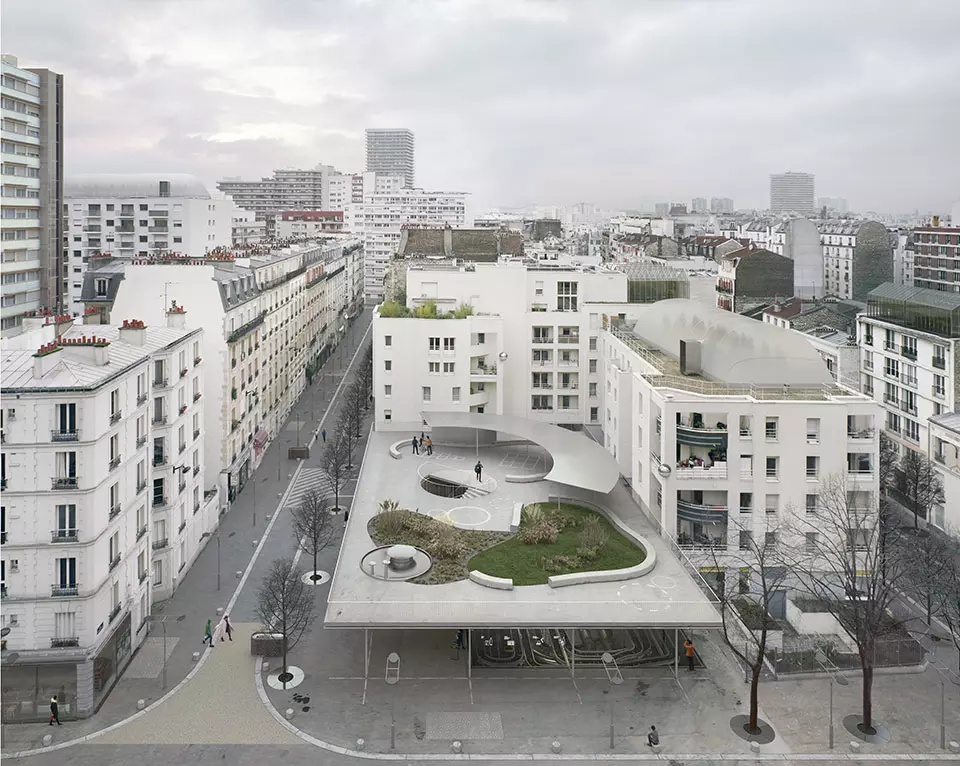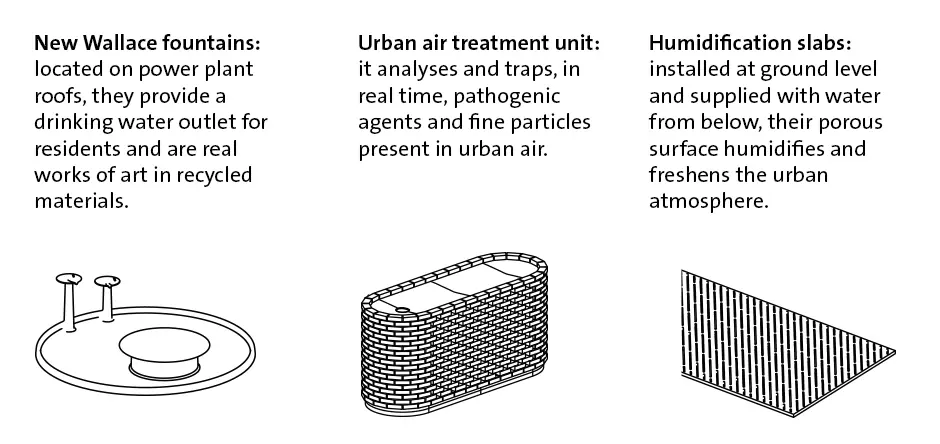On the roofs are micro-biogas production units - fed by the neighbourhood's organic waste - which generate heat and electricity to supply living and working spaces.
They are equipped with devices that adjust the consumption and connect the different buildings. We also see aquatic filtration equipment, aquaponics greenhouses and solar panels. People go to work on foot, use low-emission personal transport or public transport that benefits from dedicated road improvements.

Paved pedestrian streets have widened; they rub shoulders with bike paths and tram lines. Electric vehicles and electric rickshaws blossom. A new type of street furniture has emerged. It improves sensory comfort in the city. Sources of white noise, dimmable and tonal lighting, wave reducer, heating surfaces, air purifiers and urban cooling systems join the city ecosystem.
Three new objects are characteristic of the urban space


